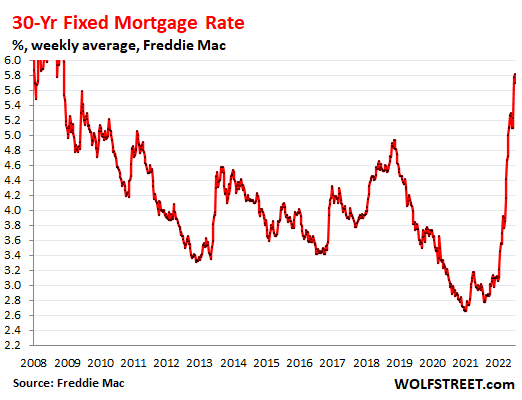Density, SROs, SB 10: Sweeping new San Diego housing package … – The San Diego Union-Tribune

San Diego Mayor Todd Gloria is proposing a sweeping package of incentives and regulatory changes that aim to boost construction of housing for middle-income residents, college students and people facing homelessness.
One proposal would make San Diego one of the few cities in California to embrace controversial Senate Bill 10, new legislation that allows as many as 10 housing units on a single property if it’s located near transit.
Other proposals include looser rules for housing developments on public land and on underutilized commercial sites, incentives for building new single-room-occupancy hotels and a policy accelerating conversion of sites hosting businesses like scrapyards into housing.
Critics, including many community leaders in neighborhoods dominated by single-family homes, say Gloria’s proposals are reckless, ignore the need for supportive infrastructure and would damage the quality of life for many residents.
Supporters say the proposals are measured and sensible efforts to address the city’s glaring lack of affordable housing, which they say puts San Diego at risk of losing residents and businesses to other regions.
They also note that the package protects many low-income San Diegans with a policy that gives residents displaced by new housing projects a leg up on securing subsidized units within new developments in their neighborhood.
Gloria is characterizing the wide-ranging plan as a follow-up to a package of city housing reforms approved last year, which featured seven new incentives, including one allowing businesses to build on-site housing for their workers.
Politics
Package includes developer incentives, local changes to SB9; but ADU reform less than resident group sought
Jan. 15, 2022
The mayor is calling the new package, which the City Council could consider approving as soon as July, his “Housing Action Package 2.0.”
The proposed reforms come three months after a contentious 5-4 City Council vote to spur housing by softening existing rules for taller apartment buildings and backyard units when a property is near mass transit.
The change allows the taller apartment buildings when the transit line is as far as 1 mile away, instead of half a mile.
Politics
The San Diego City Council voted 5-4 to soften existing rules governing where high-rise apartment buildings and additional backyard units can be built.
Feb. 14, 2023
In the new package, the individual proposal getting the most attention is Gloria’s decision to embrace SB 10, a state law that cities can ignore, fully adopt or adopt in a tailored way.
Essentially, SB 10 allows property owners to replace a single-family home with up to 10 units depending on the square footage of the lot, with one unit allowed for every 1,000 square feet.
San Diego has chosen to allow SB 10 developments only in the city’s designated sustainable development area — the nearly one third of the city that is characterized by proximity to transit or the presence of quality jobs and educational opportunities.
Critics say that SB 10 would apply to a much larger portion of city acreage that can actually be developed. They note the city includes in its total calculation thousands of acres that can’t be, such as Mission Trails Regional Park.
The Community Planners Committee, an umbrella group for neighborhood leaders from across the city, recommended last month that SB 10 be removed from the package because of its potential negative impacts on single-family neighborhoods.
The group also said that if SB 10 remains in the package, city officials should require more subsidized housing units from property owners who build at least four units on a site.
The mayor’s proposed version of SB 10 would require one of the 10 homes to be subsidized. The Community Planners Committee recommends the city require three.
Other critics have been more aggressive and vocal, including some who staged a citywide protest in early May against Gloria’s housing package and the possibility of the city embracing SB 10.
“Our city officials have been rolling out one high-density housing initiative after another, without regard to the supporting infrastructure that would be needed, the negative impacts on the environment, delayed fire and safety response times, lack of police protection, impaired traffic circulation and decreased quality of life for existing residents,” said Bonnie Kutch, who lives in University City, one of the neighborhoods the city has targeted as a growth center. “Our city government will be unraveling the very fabric of San Diego that everyone here knows and loves, while destroying it for the next generation.”
Politics
Despite a backlash to the proposed jump in housing units, population and jobs, city officials say neighborhood — the city’s top employment center — is primed for such growth.
Dec. 24, 2022
Danna Givot, who lives in the College Area, was more blunt.
“SB 10 would randomly drop 10-unit apartment complexes in single-family residential zones,” said Givot, a member of Neighbors for a Better San Diego, a group of mostly single-family homeowners that lobbies against loosening rules for dense housing.
Heidi Vonblum, the city’s planning director, said the decision to restrict SB 10 to less than one-third of the city means it’s not random. She stressed that state law would allow SB 10 in more areas than the city plans, but officials are being strategic.
“These are areas that are largely located near transit and have the opportunity to provide increased housing capacity,” she said.
Vonblum said the impact of SB 10 on single-family areas is being exaggerated, contending that only a small number of property owners will use the new opportunity.
“Ten units are not going to drop onto every single-family zoned parcel,” she said. “Many people will choose not to develop, as with most of our regulations, and others will have physical site constraints that limit the number of units.”
Vonblum also noted that no height restrictions are being removed, so most SB 10 development in single-family areas won’t be taller than three stories, meaning they will likely be townhomes instead of mid-rise and high-rise buildings.
Local
City planners and residents debate how best to update the plan that will shape the community for the coming decades
Sept. 3, 2022
Another key reform in the package is targeting businesses like scrapyards and other environmentally hazardous businesses for conversion to housing. The policy would apply only in the promise zone in southeastern San Diego and only on land zoned residential.
The policy would set a deadline for the existing business to cease operations so that the land could be converted.
Some critics question whether the policy would violate property rights, but VonBlum said it would help achieve multiple goals — both adding housing and eliminating environmental hazards from mostly residential areas in a low-income part of the city.
No decision has been made on how long such businesses could keep operating before being forced to close. Vonblum said residents have lobbied for a shorter deadline, while the affected businesses want more time.
The package also includes incentives for private housing developments near college campuses, eliminating the need for agreements with the nearby school and allowing more flexibility on the bonus units developers can build if they make some units rent-restricted.
There are also incentives for construction of new single-room-occupancy hotels, widely considered the lowest rung on the housing ladder above homelessness.
Development across downtown in recent decades has shrunk the number of remaining SRO units in the city from roughly 14,000 in the late 1980s to less than 3,000 today.
Politics
San Diego has seen dip from 14,000 to 3,900 since 1980s
Feb. 6, 2016
Additional incentives in the package focus on encouraging developers to build large projects on public land or commercial land that is not considered well used, such as large parking lots.
The city would also implement locally AB 2097, a state law that bans cities from requiring developers to include parking spots in projects within a half-mile of transit.
The city three years ago eliminated such parking requirements in many parts of the city, but this would increase the acreage in the city with no parking requirements by more than 30 percent, said Seth Litchney, the city’s housing policy program manager.
Andrea Schlageter, chair of the Community Planners Committee, said that while members of her group mainly objected to SB 10, they were generally less than enthusiastic about the whole package.
“The general thought seems to be that this is overkill,” she said. “There’s already so many density incentives in place, and we’ve already upzoned enough to meet our state housing goals.”
The number of homes being built in San Diego each year must accelerate significantly for the city to meet a state-mandated goal of 108,000 more units between 2020 and 2029, but critics say existing city housing legislation already allows for far more than that.
Supporters say the housing crisis is so severe that the city needs to provide developers and property owners as many incentives as possible.
For details on the package, visit https://www.sandiego.gov/sites/default/files/draft_code_amendments.pdf.
Get Essential San Diego, weekday mornings
Get top headlines from the Union-Tribune in your inbox weekday mornings, including top news, local, sports, business, entertainment and opinion.
You may occasionally receive promotional content from the San Diego Union-Tribune.
Follow Us
Politics
Sept. 16, 2023
Politics
Sept. 16, 2023
Politics
Sept. 15, 2023
Politics
Sept. 13, 2023
Politics
Sept. 12, 2023
Politics
Sept. 12, 2023
National Entertainment
All of the bills passed in the Legislature now head to Gov. Gavin Newsom, who has a month to decide whether to sign them into law
Sept. 15, 2023
Nation-World
Federal prosecutors in the case charging Donald Trump with scheming to overturn the 2020 presidential election are seeking an order that would restrict the former president from “inflammatory” and “intimidating” comments about witnesses, lawyers and the judge
Sept. 15, 2023
Nation-World
The Pentagon’s Central Command has ordered interviews of roughly two dozen more service members who were at the Kabul airport when suicide bombers attacked during U.S. forces’ chaotic Afghanistan withdrawal, as criticism persists that the deadly assault could have been stopped
Sept. 15, 2023
Columns
For a while, it appeared that a lot more money had been secured to deal with the toxic flows in the Tijuana River Valley
Sept. 15, 2023
Watchdog
Troubled review is the latest in yearslong history of challenges in city’s Purchasing and Contracting Department
Sept. 15, 2023
Business
Mega development replacing Seaport Village and surrounding areas is expected to have significant environmental impacts across categories such as air quality, water quality and transportation
Sept. 14, 2023
Public Safety
Sept. 16, 2023
Public Safety
Sept. 16, 2023
Public Safety
Sept. 16, 2023
Public Safety
Sept. 15, 2023
Public Safety
Sept. 15, 2023
Sept. 13, 2023
Sept. 14, 2023
Jan. 17, 2018
March 16, 2022
Sept. 10, 2023
San Diego Wave FC
Sept. 16, 2023
Aztecs
Sept. 16, 2023
Padres
Sept. 16, 2023
Privacy Policy
Terms of Service
Sign Up For Our Newsletters
Site Map
Follow Us
MORE



